A Comprehensive Guide to Sera Monastery: History, Culture, and Spirituality
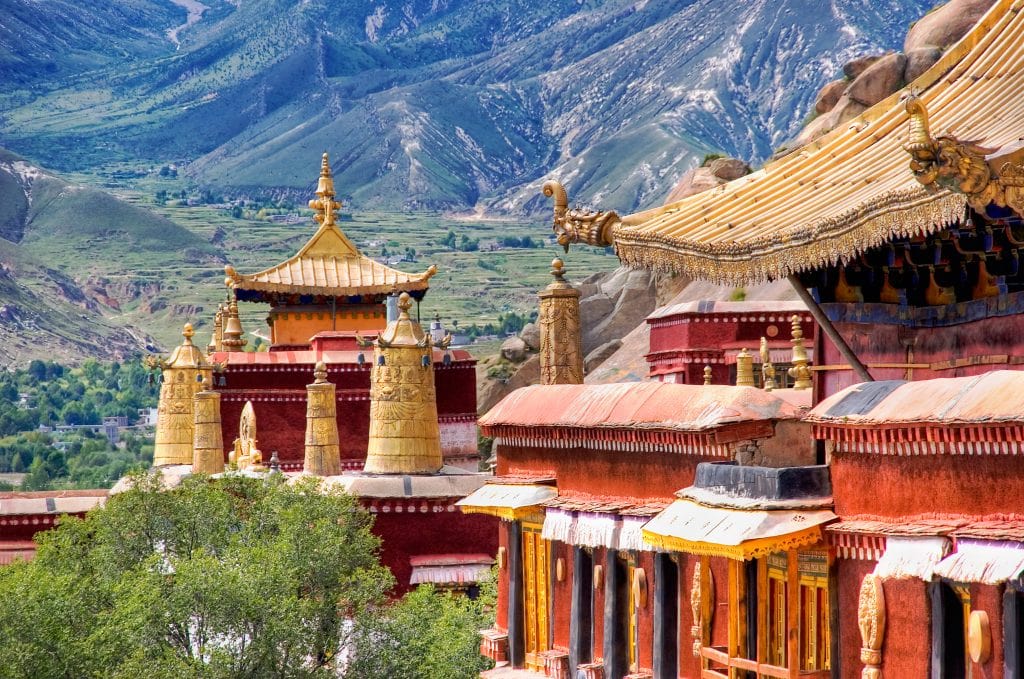
An Essential Guide to Visiting Sera Monastery
Nestled against the backdrop of the majestic Utsé Mountain, Sera Monastery stands as a timeless testament to Tibetan Buddhist culture and education. Established in 1419, this revered institution is one of the “great three” Gelug University monasteries, alongside Ganden and Drepung, and offers visitors a unique glimpse into the spiritual and architectural heritage of the region. With its intricate architecture, vibrant murals, and the renowned monk debates that echo through its halls, Sera Monastery is more than just a place of worship; it is a living classroom where centuries-old traditions continue to thrive.
As you step onto its expansive grounds, spanning approximately 110,000 square meters, you’ll be captivated by the serene atmosphere and the palpable sense of history that permeates every corner. The monastery once housed over 8,000 monks and remains a vital center for Buddhist learning today, welcoming both the devout and curious travelers alike. Whether you’re wandering through the ornate prayer halls, marveling at the priceless artifacts, or witnessing the lively debates between monks, a visit to Sera Monastery promises to be an enriching experience that deepens your understanding of Tibetan Buddhism and its enduring legacy.
Prepare to embark on a journey of discovery, where spirituality and scholarship intertwine, and where every stone carries a story waiting to be told.
In This Guide
- An Essential Guide to Visiting Sera Monastery
- The Rich History and Legends of Sera Monastery
- Main Highlights: What You Absolutely Can’t Miss
- Planning Your Visit: A Practical Guide
- Tickets: Prices, Booking, and Tips
- How to Get There: A Complete Transportation Guide
- Local Cuisine and Accommodation Nearby
- Frequently Asked Questions
- Final Thoughts on Your Trip
The Rich History and Legends of Sera Monastery
Nestled at the foot of the Utsé Mountain, Sera Monastery is one of the most revered centers of Tibetan Buddhism, steeped in rich history and captivating legends. Founded in 1419 by the esteemed Shakya Yeshe, a disciple of the influential Tsongkhapa, Sera Monastery has played a pivotal role in the development of the Gelug school of Tibetan Buddhism. The origins of its name are as enchanting as the monastery itself, with two popular legends explaining its significance.
According to the first legend, when the site for the monastery was being prepared, a fierce hailstorm descended upon the area. The Tibetan word for hailstone is “sera,” leading to the belief that the monastery’s name, Sera, translates to “Hail Monastery.” The second legend tells of the site being surrounded by blooming wild roses, which in Tibetan are also called “sera.” Thus, the name Sera Monastery could also mean “Monastery of the Wild Roses.”
In its early days, Sera Monastery consisted of a main hall and two colleges, with its establishment marking a crucial moment in the propagation of Mahayana Buddhist teachings. The monastery became a vibrant hub for spiritual learning, housing thousands of monks—at its peak, the population reached over 8,000, making it the second-largest monastery in Tibet, second only to Drepung Monastery.
The architectural marvel of Sera Monastery is representative of Gelug tradition, featuring intricate designs and spacious layouts. The monastery complex spans approximately 110,000 square meters, centered around the grand Tsochin Hall, with additional buildings for its various colleges. Among the many treasures housed within its walls are invaluable Tibetan scriptures, exquisite thangkas, and countless gold and bronze Buddha statues, some of which date back to ancient times.
Sera Monastery’s historical significance extends beyond its educational functions. In the 15th century, Emperor Yongle of the Ming Dynasty recognized the monastery’s importance and sought to recruit Tsongkhapa for religious rites in Beijing. Although Tsongkhapa could not accept the invitation due to his commitments, Shakya Yeshe later traveled to the Ming court, where he was honored with the title of “National Guoshi,” or state preceptor. This event marked the beginning of a profound relationship between the Gelug sect and the Ming Dynasty, influencing Buddhism’s spread across China.
As the centuries progressed, Sera Monastery faced numerous challenges, including political upheaval and the impact of modernization. However, following the reform and opening-up policies of China, the monastery has seen a revival. The restoration of its structures and the nurturing of monastic life have breathed new life into Sera. Today, it remains a vibrant center for learning and spiritual practice, ensuring that the rich history and traditions of Tibetan Buddhism continue to thrive.
Visitors to Sera Monastery are not only treated to stunning architecture and spiritual ambiance but also have the opportunity to witness the famous monk debates, a dynamic and engaging tradition that exemplifies the monastery’s role as a center of philosophical discourse. In this sanctuary of culture and devotion, the echoes of history and legends continue to resonate, inviting travelers to explore the depths of Tibetan spirituality and heritage.
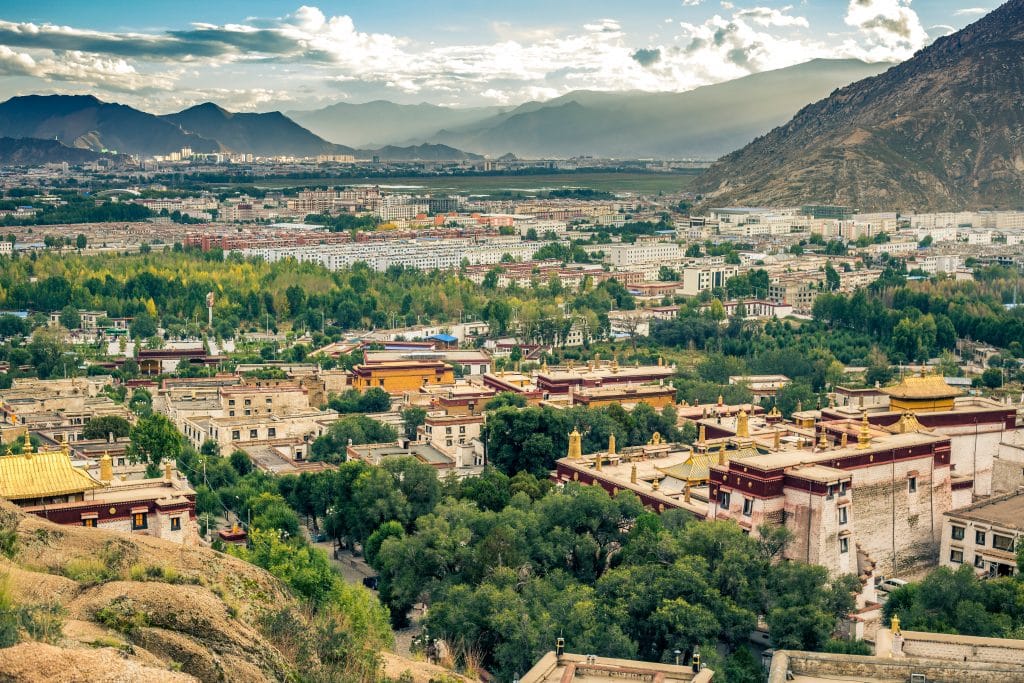
Sera Monastery.
Main Highlights: What You Absolutely Can’t Miss
Sera Monastery is a remarkable destination that offers a captivating glimpse into Tibetan Buddhism and culture. Nestled at the foot of Utsé Mountain, this sprawling complex is not only an architectural marvel but also a vibrant center of learning and spirituality. Here are the main highlights you absolutely can’t miss during your visit:
1. The Iconic Debating Monks
One of the most unique experiences at Sera Monastery is witnessing the lively debates among the monks. Every afternoon, you can observe these animated sessions where monks engage in philosophical discussions, often accompanied by expressive gestures and dramatic movements. This traditional practice not only sharpens their understanding of Buddhist texts but also provides a fascinating spectacle for visitors.
2. The Stunning Architecture
As you wander through the monastery, take a moment to appreciate the stunning traditional Tibetan architecture. The layout centers around the Tsochin Hall, surrounded by various colleges that house thousands of scriptures, thangkas, and intricately crafted statues. The vibrant colors and ornate designs throughout the complex reflect the rich cultural heritage of Tibetan Buddhism.
3. The Rich History
Founded in 1419 by Shakya Yeshe, a disciple of the esteemed Tsongkhapa, Sera Monastery has a storied past. As you explore, consider the significant events that have unfolded within these walls, including the influence of the Ming Dynasty and the propagation of the Gelug sect. Be sure to visit the areas where historical relics, such as scriptures and statues bestowed by Emperor Yongle, are displayed.
4. The Serene Environment
Sera Monastery is set against the backdrop of pristine mountains, providing a serene atmosphere that enhances your spiritual experience. Take a leisurely stroll around the monastery’s perimeter, where the 1.5-kilometer kora (circumambulation path) invites contemplation and reflection amidst the beauty of nature.
5. The Cultural Treasures
Inside the monastery, you’ll find an impressive collection of artifacts, including thousands of gold and bronze Buddha statues, historical scriptures, exquisite thangkas, and detailed murals. These treasures not only serve as objects of worship but also as testimonies to the artistic achievements of Tibetan culture over the centuries.
6. The Monastery Library
Don’t miss the library, which houses invaluable texts and manuscripts that are vital to the study of Mahayana Buddhism. This scholarly hub is a treasure trove for those interested in deepening their understanding of Tibetan Buddhism and the teachings of Tsongkhapa.
7. Engaging with the Monks
Take the opportunity to interact with the resident monks, some of whom may be eager to share their knowledge and experiences with you. Their stories and insights can enrich your visit and provide a deeper understanding of the monastery’s significance in Tibetan culture.
8. The Surrounding Landscape
Finally, make sure to soak in the breathtaking views of the surrounding landscape. The monastery is located just 10 kilometers from Lhasa, and the panoramic vistas of the Tibetan plateau are simply unforgettable.
A visit to Sera Monastery is not just a journey through history and architecture; it is an immersive experience that connects you with the heart of Tibetan spirituality and culture. Whether you’re drawn by the debates, the art, or the serene environment, Sera Monastery promises to leave a lasting impression.
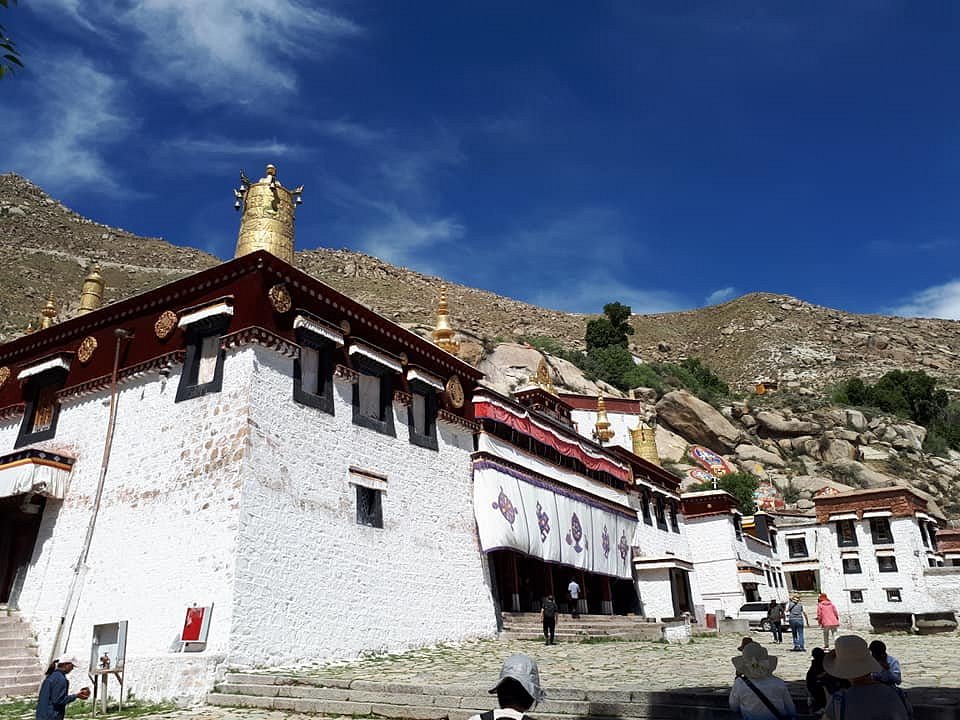
Sera Monastery.
Planning Your Visit: A Practical Guide
Visiting Sera Monastery offers a unique glimpse into the rich tapestry of Tibetan Buddhism, history, and culture. As you plan your journey to this iconic site, here’s a practical guide to ensure you make the most of your visit.
Getting There
Location: Sera Monastery is situated about 10 kilometers north of Lhasa, nestled at the foot of Utsé Mountain.
Transportation Options:
– By Taxi: The most convenient way to reach the monastery from Lhasa is by taxi. Expect to pay around 30-50 RMB for a one-way trip.
– By Bus: Public buses also run from Lhasa to Sera Monastery, which is a cost-effective option. Look for bus number 5 or 22.
– Guided Tours: Many tour operators offer packages that include Sera Monastery as part of a larger itinerary. This is a great way to ensure a guided experience.
Opening Hours
Sera Monastery is typically open from 9 AM to 5 PM. However, it’s wise to check for any seasonal changes or special events that might affect visiting hours.
Entry Fees
There is a nominal entrance fee of around 50 RMB. This fee contributes to the maintenance of the monastery and its cultural preservation efforts.
What to Expect
Architecture: Sera Monastery showcases stunning Tibetan architecture, with resplendent halls and intricate designs. The main hall, Tsochin Hall, serves as the heart of the monastery, surrounded by various colleges and buildings.
Monk Debates: One of the highlights of visiting Sera Monastery is witnessing the daily debates among monks, usually held in the afternoons. This lively and engaging tradition is a core aspect of their education and offers visitors a unique insight into Buddhist philosophy.
Cultural Treasures: Inside, you’ll find an impressive collection of scriptures, thangkas (traditional Tibetan paintings), and Buddha statues. Don’t miss the opportunity to explore the monastery’s library, which houses invaluable texts and artifacts.
Dress Code and Etiquette
As a place of worship, it’s important to dress modestly. Women should wear skirts or long pants, and men should avoid shorts. Be respectful while inside the monastery: speak softly, avoid taking photos in restricted areas, and always ask for permission before photographing monks or local practitioners.
Best Time to Visit
The ideal time to visit Sera Monastery is during spring (April to June) and autumn (September to November) when the weather is mild and the scenery is beautiful. Summer can be crowded due to tourist influx, while winter may bring harsh weather conditions.
Nearby Attractions
Consider combining your visit to Sera Monastery with trips to other significant sites in Lhasa:
– Drepung Monastery: Another of the “great three” Gelug monasteries, located about 8 kilometers away.
– Norbulingka Palace: The summer residence of the Dalai Lama, showcasing stunning gardens and traditional Tibetan architecture.
– Potala Palace: The iconic symbol of Tibet, known for its majestic structure and rich history.
Local Tips
- Stay Hydrated: Lhasa is at a high altitude, so drink plenty of water to mitigate altitude sickness.
- Cash is King: While some establishments accept credit cards, it’s advisable to carry cash, particularly for small purchases.
- Respect the Culture: Engaging with local customs and practices enhances your experience. Take time to learn about Tibetan Buddhism and engage respectfully with the monks and locals.
Conclusion
Sera Monastery is more than just a historical site; it’s a vibrant center of learning and spiritual practice. By planning ahead and following these guidelines, you can immerse yourself in the profound culture and history of Tibetan Buddhism while enjoying the breathtaking landscapes of Lhasa. Enjoy your journey!
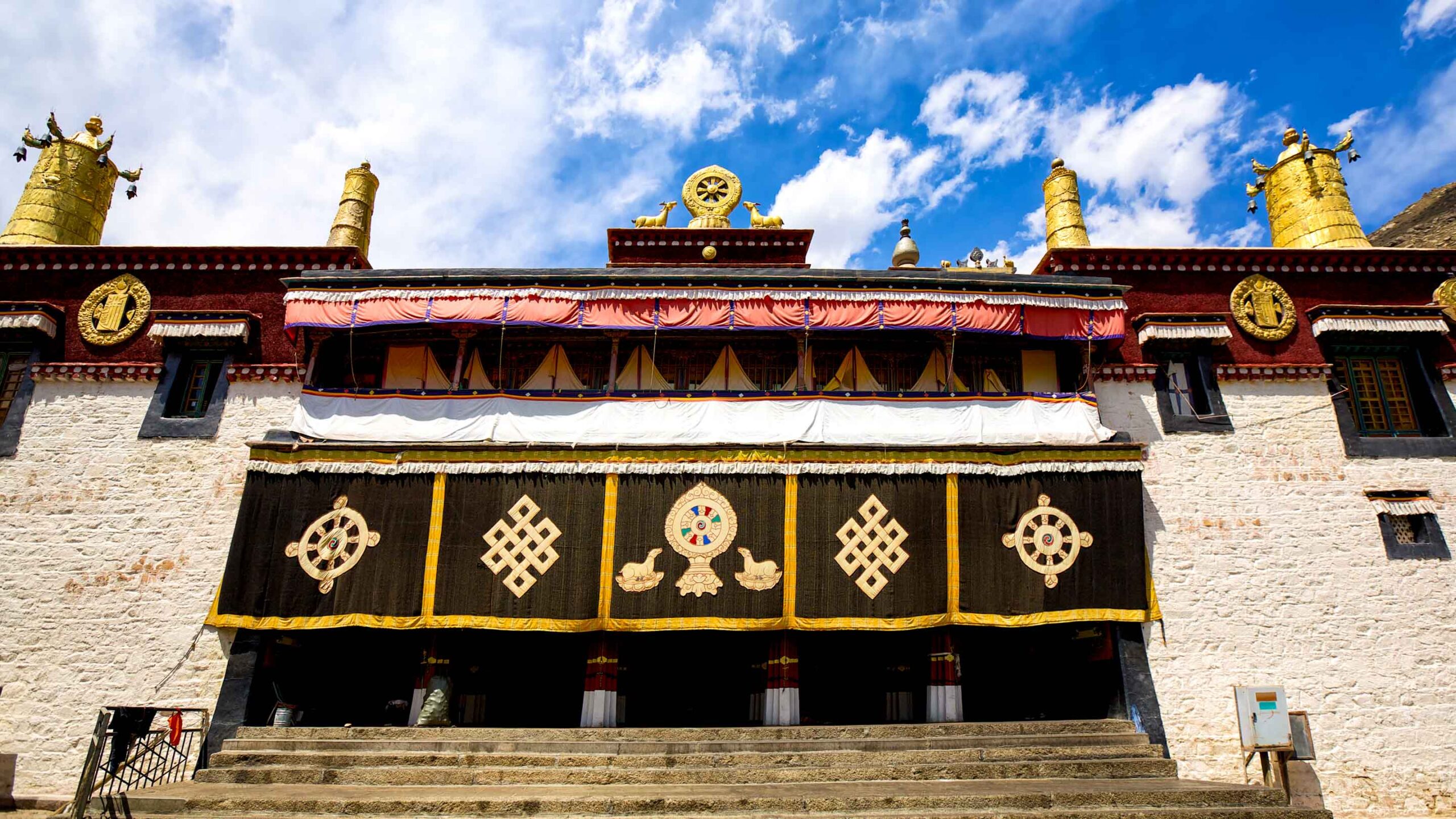
Sera Monastery.
Tickets: Prices, Booking, and Tips
When planning your visit to Sera Monastery, it’s essential to know the ticketing details, pricing, and some handy tips for a smooth experience.
Ticket Prices
As of 2023, the entrance fee to Sera Monastery is typically around ¥50 (approximately $7). This ticket grants you access to the monastery grounds, where you can explore its stunning architecture and serene environment.
Booking Your Tickets
There’s no need for advance booking for individual visitors; you can purchase your ticket on-site when you arrive. However, if you’re part of a larger group or planning a guided tour, it’s wise to arrange tickets in advance through your tour operator. Many local travel agencies offer packages that include visits to Sera Monastery alongside other attractions in Lhasa.
Tips for Your Visit
-
Timing Your Visit: Sera Monastery is open to visitors daily, generally from 9 AM to 5 PM. To experience the lively monk debates, aim to visit in the afternoons when these debates typically take place, usually around 3 PM to 5 PM. This vibrant display of Buddhist philosophy in action is a must-see!
-
Getting There: The monastery is located about 10 kilometers from downtown Lhasa. You can take a taxi, which costs around ¥20-30 ($3-5), or opt for local buses that run frequently between the city and the monastery.
-
Dress Code: As Sera Monastery is an active religious site, modest dress is encouraged. Ensure your shoulders and knees are covered out of respect for the local customs.
-
Photography: Feel free to take photos in most areas of the monastery, but be mindful of your surroundings and avoid disrupting any religious practices.
-
Guided Tours: If you want a deeper understanding of the monastery’s history and significance, consider joining a guided tour. Local guides can provide insights into the intricacies of Tibetan Buddhism and the stories behind the monastery’s stunning art and architecture.
-
Plan Your Time: Allocate at least 1-2 hours to explore the monastery. This will give you ample time to enjoy the architecture, watch the monk debates, and soak in the spiritual atmosphere.
By keeping these details in mind, your visit to Sera Monastery will be not only enriching but also seamless and enjoyable. Prepare to be captivated by the rich history and vibrant culture that this sacred site embodies!
How to Get There: A Complete Transportation Guide
Getting to Sera Monastery is a journey filled with breathtaking views and cultural richness, making it an essential stop for any traveler exploring Tibet. Located approximately 10 kilometers from downtown Lhasa, this exquisite monastery is easily accessible by various modes of transportation. Here’s how you can make your way to this iconic site.
By Taxi
The most convenient way to reach Sera Monastery from Lhasa is by taxi. Taxis are readily available throughout the city, and the drive to the monastery takes about 20-30 minutes, depending on traffic conditions. Expect to pay around 40-60 RMB for a one-way trip. Make sure to agree on the fare before getting into the taxi, as not all drivers use a meter.
By Bus
For a more budget-friendly option, you can take a public bus. Buses to Sera Monastery depart from the Lhasa bus station, and the journey takes approximately 30-40 minutes. Look for buses labeled as “Sera Monastery” or ask locals for assistance. A ticket will cost you around 5-10 RMB. Keep in mind that buses may run less frequently, so check the schedule in advance.
Guided Tours
If you prefer a more organized experience, consider booking a guided tour. Many travel agencies in Lhasa offer day trips that include transportation to Sera Monastery along with other significant sites in the area, such as Drepung Monastery and Ganden Monastery. This option often includes a knowledgeable guide who can provide insights into the history and significance of each location.
Self-Drive
For adventurous travelers, renting a car is another option. However, driving in Tibet requires careful consideration due to altitude and road conditions. Ensure you have the necessary permits and are comfortable navigating the local roads. Renting a car can provide you with the flexibility to explore at your own pace, though it’s advisable to hire a local driver who is familiar with the area.
Accessibility
Sera Monastery is situated at a relatively high altitude (about 3,600 meters), so it’s essential to acclimatize before undertaking any strenuous activities. If you’re traveling with mobility concerns, it’s wise to inform your taxi driver or tour operator in advance, as the monastery’s layout includes some steep pathways.
Final Thoughts
Regardless of how you choose to get to Sera Monastery, the journey is sure to be as enriching as the destination itself. Whether you opt for the ease of a taxi, the adventure of a self-drive, or the camaraderie of a group tour, you’ll find that the sights and sounds along the way only heighten the anticipation of witnessing the awe-inspiring beauty of this historic site. Embrace the experience, and enjoy your journey to one of Tibet’s most revered monasteries!
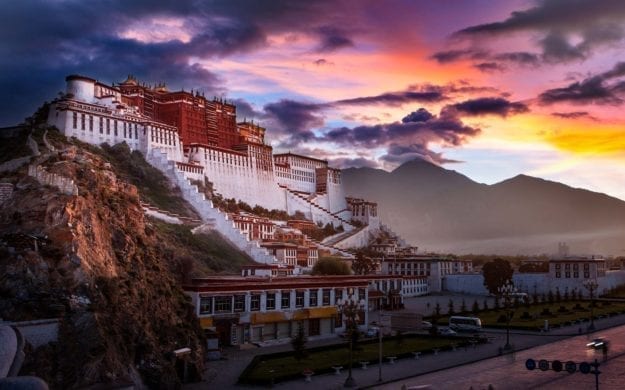
Sera Monastery.
Local Cuisine and Accommodation Nearby
When visiting the majestic Sera Monastery, you’ll find that the surrounding area offers a delightful array of local cuisine and comfortable accommodations, perfect for enhancing your Tibetan experience.
Culinary Delights
For an authentic taste of Tibetan cuisine, be sure to explore the local eateries near Sera Monastery. Here are a few highlights:
-
Lhasa Kitchen
Located just a short drive from the monastery, Lhasa Kitchen is renowned for its traditional Tibetan dishes. Try the Momos (steamed dumplings) or the hearty Thukpa (noodle soup) for a warm and filling meal. The restaurant also offers vegetarian options, making it a great choice for all dietary preferences. -
The Tibetan Family Kitchen
This cozy eatery provides a homely atmosphere where you can enjoy home-cooked Tibetan meals. The Sha Phaley (fried meat pies) and Tse-Nga (a type of Tibetan pancake) are local favorites. The owners are enthusiastic about sharing their culinary traditions, making it a great spot to learn about Tibetan culture over a meal. -
Snowland Restaurant
A little further afield, Snowland Restaurant offers a diverse menu featuring both Tibetan and Chinese dishes. The Yak Steak is a must-try for meat lovers, while the Vegetable Curry offers a flavorful vegetarian alternative. The restaurant’s decor reflects Tibetan artistry and provides a warm ambiance to enjoy your meal.
Where to Stay
After a day of exploring the monastery, unwind at one of the nearby accommodations, which cater to various budgets and preferences:
-
Sera Monastery Guesthouse
For the most immersive experience, consider staying at the Sera Monastery Guesthouse. This simple yet comfortable option allows you to connect with the monastic environment and enjoy the peaceful surroundings. You can wake up to the sounds of morning prayers and enjoy the serene landscape. -
Tibet Gorkha Hotel
A short distance from Sera Monastery, the Tibet Gorkha Hotel offers modern amenities with a touch of Tibetan hospitality. Enjoy spacious rooms with stunning views of the mountains. The on-site restaurant serves a mix of Tibetan and international cuisine, making it a convenient choice for travelers. -
Khangsar Hotel
Located in the heart of Lhasa, Khangsar Hotel is a bit further from the monastery but offers comprehensive facilities, including a spa and a rooftop terrace. The hotel provides a blend of comfort and culture, with decor that reflects Tibetan aesthetics. A restaurant on-site serves delicious local dishes, ensuring you don’t miss out on the culinary delights.
Conclusion
Whether you’re indulging in local flavors or finding a cozy place to rest, the area surrounding Sera Monastery is rich with options that cater to your needs as an international traveler. Embrace the essence of Tibetan culture through its food and hospitality while enjoying the spiritual ambiance of this historic site.

Sera Monastery.
Frequently Asked Questions
Frequently Asked Questions About Sera Monastery
-
What is the best time to visit Sera Monastery?
The best time to visit Sera Monastery is during the spring (April to June) and autumn (September to November) months when the weather is mild and pleasant. These seasons also feature fewer tourists, allowing for a more serene experience as you explore the monastery and its surroundings. -
How do I get to Sera Monastery from Lhasa?
Sera Monastery is located approximately 10 kilometers north of Lhasa. You can easily reach it by taking a taxi, which typically takes around 15-20 minutes. Alternatively, local buses also operate routes to the monastery, making it accessible for budget travelers. -
Are there any entrance fees to visit Sera Monastery?
Yes, there is a small entrance fee to visit Sera Monastery, which is used for the maintenance and preservation of the site. The fee is generally affordable, but it’s wise to check for any updates before your visit. -
What should I wear when visiting the monastery?
It is advisable to dress modestly when visiting Sera Monastery, as it is a place of worship. Loose-fitting clothing that covers your shoulders and knees is recommended. Additionally, comfortable walking shoes are ideal, as you will likely be exploring the expansive grounds. -
Is it possible to participate in the monk debates at Sera Monastery?
Yes, one of the highlights of visiting Sera Monastery is witnessing the lively monk debates, which typically take place in the afternoons. These debates are an integral part of the monks’ education and are open for visitors to observe and appreciate. -
What are the main attractions within Sera Monastery?
Key attractions include the Tsochin Hall, where many important ceremonies take place, and the various colleges that make up the monastery. The extensive collection of Tibetan scriptures, thangkas, and Buddha statues are also must-sees for art and culture enthusiasts. -
Can I take photographs inside the monastery?
Photography policies can vary, so it’s important to be respectful of the rules. Generally, visitors are allowed to take photos in certain areas, but always check for signs or ask monks for permission, especially in prayer halls or during ceremonies. -
Are there any accommodation options near Sera Monastery?
While there are no accommodations directly at Sera Monastery, Lhasa offers a wide range of options, from budget hostels to luxury hotels. Staying in Lhasa gives you easy access to the monastery and other nearby attractions, making it a convenient base for your explorations.
Final Thoughts on Your Trip
As you reflect on your journey to Sera Monastery, allow the rich tapestry of history, culture, and spirituality to resonate within you. This sacred site, nestled at the foot of Utsé Mountain, is not just a destination but a living narrative of Tibetan Buddhism, echoing the teachings of the revered Tsongkhapa and housing centuries of wisdom and art. The vibrant debates among monks, the intricate thangkas, and the serene ambiance invite a sense of tranquility and contemplation.
Whether you marveled at the breathtaking architecture or participated in the lively debates that animate the courtyard, every moment spent in Sera is a reminder of the profound connection between humanity and the divine. As you depart, carry with you the stories of the monks, the legends of its founding, and the sense of peace that envelops this remarkable monastery.
May your experiences inspire you to delve deeper into the rich cultural heritage of Tibet, and may the spirit of Sera Monastery accompany you on your future travels, encouraging you to seek knowledge, understanding, and harmony in all that you do. Safe travels!